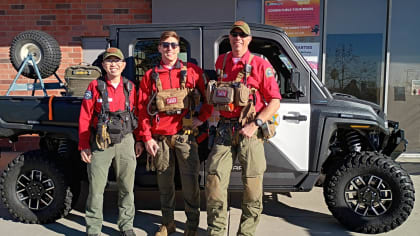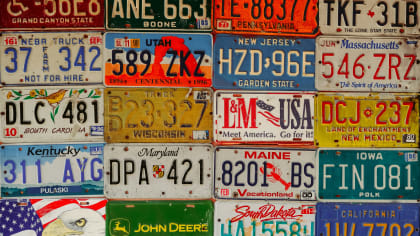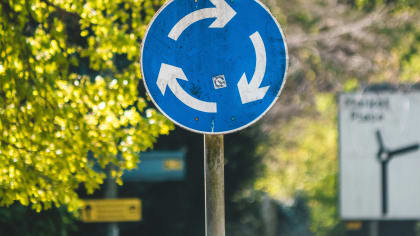BLACK NOON
The year they stopped the INDY 500
This article is from our archives and has not been updated and integrated with our "new" site yet... Even so, it's still awesome - so keep reading!
Published on Sat, Jun 28, 2014
By: The LACar Editorial Staff

BOOK REVIEW
BLACK NOON
The year they stopped the INDY 500
By Art Garner
Review by Doug Stokes
This is a remarkably thorough and well-researched book that’s centered on (but far from fixated on) a single very dark day in American racing history.
It’s a subject that could have easily been sensationalized even now some 50 years downstream of the date it happened. It has all the players, all the motives, all the hopes and the fears, all of the elements right in hand for a lurid retelling of the day that they stopped the Indy 500 race. Instead, first time author Art Garner faithfully unfolds a measured, detailed retracing of the events leading up to May 30, 1964 and the things that followed that awful day.
Black Noon is the ominous title, but even though the centerpiece of this book is the terrible accident that took place on lap one of the forty-eighth annual 500-mile race, this author thankfully chooses not to dwell too very long on the carnage, but rather to try to understand the people who were involved and the times that they lived in.
Garner’s book is first and foremost a cleanly written saga that’s told from many view points by many of the people who were actually there, who were firsthand witnesses to the event(s). Through author Garner, each in their own way (many times in their own words) helps us relate to the times and the temperament of those times. Like a good investigative reporter, he builds this story in multiple layers, pulling together the facts and presenting them in a calm and orderly progression.
For those who don’t remember what happened that day; Davey MacDonald and Eddie Sachs (a first time rookie and a 7-time veteran of the Indianapolis 500 mile race) were killed in a fiery first lap accident at the 1964 race. It was the first time the race (that had began in 1911) was halted by a wreck, and it was (to date) the only Indy 500 accident to take the lives of two men at the same time. It was quite literally, black noon.
This day-by-day narrative is a wide-angle view of something that happened in the twinkling of an eye. In point of fact, of the 342 pages in this book only twelve are given to the direct description of the accident itself. Garner is far much more interested how we got to that point and what we took away from it.
Far more than the garish story of an terrible racing wreck that claimed the lives of two very different, very intense men who were racers to their very cores; this is the story of a band of ill-fated participants that includes Mickey Thompson, Bobby Marshman, Jimmy Clark, Ronnie Duman and others who populate this true story that would have been deemed far too implausible to make a Hollywood film out of.
Racing was (and still is) a very dangerous game. In 1964, fifty years ago, it was understood that things could go off the rails pretty quickly, everyone knew that. The organizers knew, the drivers knew, and the rules-makers knew as well, and they were always (and forever) a half-step behind the innovators.
In those times the 500-mile race was place for trying new ideas, many of which ventured into areas that were more educated guesswork than tried-and-true. Rear engines, stock block V-8’s, strange configurations/concoctions in a world that had been dominated by big, front engine “Indy Roadsters” for more than a decade.
Mickey Thompson’s first name should have been Innovation. Every one of his well-documented forays into land speed, boating, off-road racing, and Indycar racing is highlighted by the fact that the machines he dreamed up, designed and then built were always somehow, some way, different from the conventional vehicles that were already out there racing. He was wired that way. He was the Hot Rodder at the garden party; he knew it and he seemed to revel in it.
As it happened everything that could go wrong, went wrong on the first lap of America’s greatest race. Most readers will know that before starting this book, but the retelling of the details shows us what the fog of war that’s always part of the racing battlefield looks like close up.
Not of the flaming wreck, but perhaps one of the saddest and most enduring set of pictures of the day that Garner includes are of the eventual winner A.J. Foyt. The first shows Foyt and his wife in victory circle, he’s been handed a (then traditional) special copy of the Indianapolis Star with a headline that reads:
FOYT WINNER IN 500
SACHS, MACDONALD DIE
Spaced out like that to be fully readable in the news photos of him that would shortly be seen around the world. A first, as he’s been told, Foyt holds the paper up to the cameras without looking at it. But then he looks down at the words, he looks at his wife, she confirms the news, and his body language changes in an instant. If anyone knew that there are some very direct consequences involved in motor racing, it was A.J. Foyt. But seeing it in 72-point headlines hits even him hard and right in the gut.
This book is strong, very strong, on the details, but it never gets so tangled up in the minutia that the story lags, even for one lap. Garner’s interviews with many of survivors are open and enlightening; every one of them moving the narrative forward as each puzzle piece is carefully examined and then fitted into the picture.
Perhaps best of all for this reviewer is the debunking of some of the myths and misstatements that have roiled about this event for 50 years now. One of them the idea that the Thompson car carried as much as 100 gallons of gasoline at the start of the race, and the other that Eddie Sachs died in the fire that resulted when his car hit MacDonald’s.
In the end, Garner’s book reads as quickly and as exciting as the race itself.
A superb working bibliography and detailed index are part and parcel of this important and highly-recommended work. -DS

A PERSONAL NOTE: On race day 1964, I was hanging out on a California beach near Arch Rock in Corona Del Mar, and listening to the 500 on a bulky “portable” radio. I really was not that big of an Indy racing fan at the time, but there were a number of my road racing heroes in the race and I wanted to follow their progress. I don’t really remember listening to the race after it was restarted, and, as I recall, the radio broadcast made the scene sound pretty grim, but it was still somehow masked, distant. Of course it was radio … there was nothing like today’s endless visuals, multiple replays from different cameras and angles. I remember that the broadcast announcers were trying to talk about anything other than the wreck. I said “distant” didn’t I, that’s the best way I can remember how removed I felt from what was going on in Indianapolis that day. Davey MacDonald was a local, he was from El Monte, we knew of him first as a hotshoe drag racer (which we sportscar aficionados were not all that impressed with). But his subsequent brilliant work behind the wheel in Shelby’s Cobras, and particularly in the team’s Cooper-based King Cobra got our full attention. This guy got a racecar farther sideways than anyone we had ever seen, and yet kept the damn thing in total control. There’s a video out there showing him doing what we called broadsliding (and the more sophisticated called “drifting”) all the way around Riverside’s long and highly technical turn 6, flat down on the power, front wheels almost at opposite lock, and pretty much looking almost bored while doing it. Twenty years after the ’64 Indy race I went to work for Mickey Thompson as the PR person for his Off-Road Championship Gran Prix series. Our cramped offices were located in the extended garage/shop/warehouse/film vault area in the canyon behind his Bradbury hills home. There were all sorts of examples of Mickey’s hot rod handiwork all over the place, including the sister car to MacDonald’s ill-fated “Indy rollerskate” still sitting on a set of Allstate racing tires. While we worked out of the Bradbury garage offices I buttonholed Mickey on an almost daily basis to ask questions about the all odd-ball engines, motorcycles, sling-shot dragsters, funny car bodies, off-road buggies, land speed record cars, and boxes upon boxes of clandestine “stock” parts shipped directly from Detroit by order of one or another divisional VP. I remember what was left of his 1985 front-engine, front-wheel drive, rear-steer chassis sitting outside next to the warehouse rusting away; it had been caught in the terrible 1980 Bradbury fire and was almost unrecognizable. I never did ask Mickey about the ’64 car or the race. -Doug Stokes, June 2014 A NOTE ON THE AUTHOR: Even though this is the author’s first book, Art Garner is eminently qualified for the work. He’s worked in the top levels of automotive business for more than 35 years, spending a great deal of that time at major race tracks across the country. His interest and understanding of the sport is both well-grounded and authentic. My personal and professional hopes are that he’ll be encouraged to continue writing motorsports history books of this quality and importance. -DS Thomas Dunn Books © 2014 An imprint of St. Martin’s Press ISBN 978-1-250-01777-2 $27.99 Available for purchase at Amazon here




